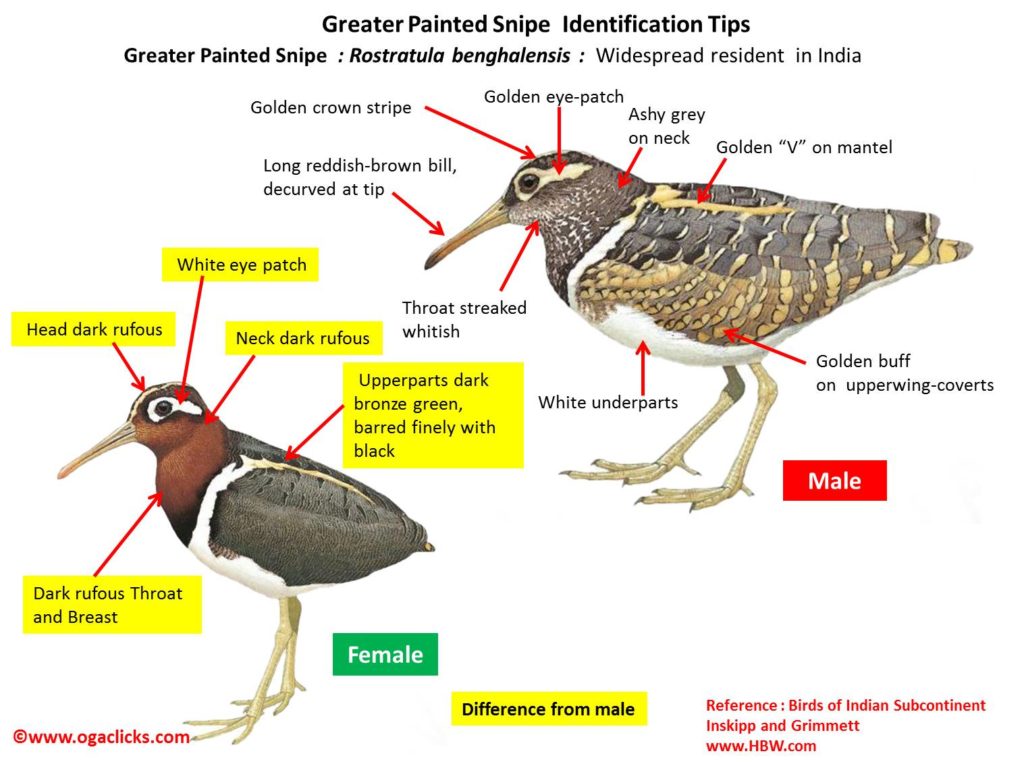Greater Painted Snipe

Greater Painted Snipe Rostratula benghalensis
Etymology:
- Rostratula : Latin for Large billed derived from rostrum- bill
- Benghalensis : From Bengal in India .
Vernacular Names: Hindi: Rajchaha, Sans: Chitritkunal, Pun: Ranglachaha, Nepal, Bi: Ohari, Ben: Baggarji, Cachar: Daodidapgajao, Guj: Panlauva, Mar: Panlauva, Hirva/ Rangitpanlauva, Rangitkekas, Chaha, Mani: Kangdruk, Guj: Pan lauva, Ta: Mayilullan, Mal: Kalikata, Kan: Bannadazellange, Sinh: Raja watuwa, Ulukeswatuwa
Distribution inIndia: Widespread resident in India.
Description: Size of23-25cm.The male has golden eye-patch, crown stripe and “V” on mantle; rest of head greyish brown, with ashy grey on neck, and throat streaked whitish; extensive golden buff on upperparts, especially upperwing-coverts; rest of underparts and underwing white. The female longer-winged, and brighter and more clearly patterned; head and neck mostly dark rufous, eye-patch clean white; most of upperparts, including wings, dark bronze green, barred finely with black.
Habitat: It is found in Wetlands in tropical and subtropical lowlands. Also found in swamps, reedbeds, jheels, overgrown rice fields and muddy margins of pools, freshwater lakes with grassy islets, sewage pools, dam-lakes, mudflats overgrown with marsh grass and mangroves.
Food Habits: It eats insects, snails, earthworms and crustaceans; also seeds, including a variety of grasses, rice and millet. It probes soft ground, also uses scything action of bill and head in shallow water. It is chiefly crepuscular, and may also feed at night. It is usually solitary, occasionally in small parties.
Breeding Habits: They breed in April-July in India and Africa.The females are Polyandrous. They nest on ground, sometimes on low hummock or mound, normally concealed in dense, marshy vegetation; alternatively in more open aquatic environments, e.g. on dense mat of floating water weed or in scrape in dry mud. The nest is a shallow cup usually lined with leaves and stems, occasionally built up with interwoven plant material. They lay a clutch of 2-5 eggs with laying interval of one day. The incubation period is 15–21 days. The incubation done by male alone, starting with last egg. The chicks are precocial and nidifugous, brooded and dependent for first few days and carried on male’s back or even carried in their feet. The fledging period is 30–35 days. The young remain with male for almost three weeks post-fledging.